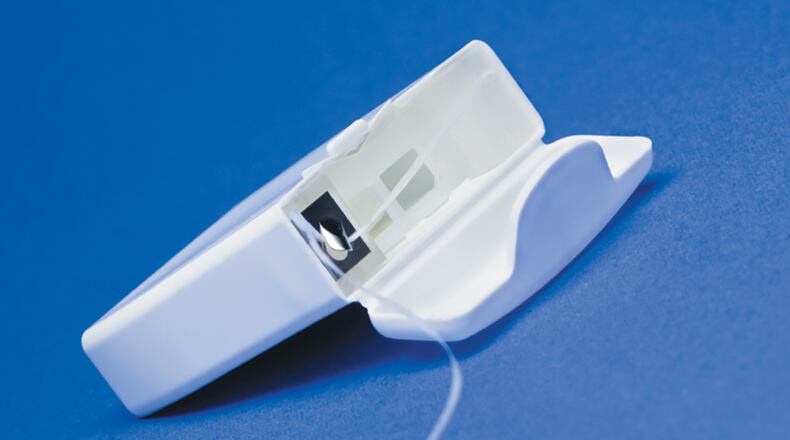Individuals who “fear the dentist” are more likely to not attend regular checkups and miss timely opportunities to catch problems when more conservative (often less painful and less expensive) treatment is still an option. As the old phrase goes, “an ounce of prevention is worth a pound of cure.”
A wise dentist once said, “Brush and floss the one’s you want to keep!”
Dental decay is a complex problem involving bacteria, food, habits and genetics. Without question, brushing is indispensable to the fight, and most of us are good about using a toothbrush at least once a day. However, many are ignoring the other half of home care: flossing. Floss can go where no tooth brush has gone before, literally between the teeth.
Daily flossing removes food and plaque. If allowed to remain, the bacteria will invade the tooth triggering sensitivity to cold and sweets. Ultimately the nerve can become sick causing severe pain, infection and eventual tooth loss.
The benefits of flossing don’t just end there. Some people are lucky to have never had a cavity in their life, no matter how bad they are at brushing. Yet, another monster can rear its ugly head: periodontal disease. Also known as periodontitis, or gum disease, inflammation caused by plaque can lead to progressive loss of soft tissue and bony support around teeth.
Studies have shown that in the United States, about half the adult population has some degree of periodontitis. Just like cavities, the bacteria in our mouths and genetics play a significant role in development of the disease. The most effective way to clean between teeth is with floss.
Proper flossing technique consists of first “wiggling” or “sawing” the floss through the contact between teeth, taking care not to “snap” into the gums. At this point, there are two areas to clean, the tooth in front and the one behind. Gently guide the floss to one side towards the gums until you feel gentle resistance. After adapting slightly to the tooth shape, proceed to swipe up or down three time to the tooth contact. Repeat for the other tooth, and then for the remaining sets of teeth in the mouth. Think of the floss as scrubbing the sides of each tooth where a toothbrush or mouth rinse can’t get to.
Flossing doesn’t just help teeth. Dental implants are a popular treatment option to replace missing teeth and for good reason. A titanium screw can be surgically implanted into the jaws. After proper healing and bony integration, a tooth shaped crown can be attached, which looks and functions so similar to natural teeth that it’s often difficult for the outside observer to tell the difference.
Although they will never get cavities, implants need to be brushed and flossed to keep the bone and gums healthy, which will prevent loosening of the implant.
What’s different about flossing around implants? First, consider that near the bone implants are perfectly round. We need a technique that can clean 360 degrees and not just on the sides. To visualize this, consider the how you start tying a necktie. The fabric is lassoed around the back of the neck and then crossed in front.
Similarly, flossing around dental implants involves lassoing the floss around the neck of the implant and then crossing the ends in front. Next, you gently shimmy the two ends back and forth to allow the floss to clean out any debris at or below the gums (see below). This technique can be challenging so please get help from a dentist or hygienist if you have any difficulty or questions.
During this global pandemic, it’s important to do the little things that keep us and our loved ones safe. The simple acts of wearing a mask, social distancing, and frequent hand washing have been shown to drastically reduce COVID-19 transmission. By the same token, effective flossing can help prevent future dental decay and gum disease around our teeth and dental implants.
About the Author
